In the festive world of Philippine cookery, one name will always be associated with the Philippine Lechon--Mang Tomas Delos Reyes, pioneer lechon roaster in the La Loma, Quezon City.
Mang Tomas started in the early 1950s what is now the booming lechon industry, right from the very yard of his house in front of the La Loma Cockpit Arena. Before that, however, Mang Tomas was just a simple provinciano meat vendor selling pork meat around the neighborhood of La Loma.
Some of Mang Tomas' customers were the cockpit aficionados in the nearby La Loma Cockpit Arena. After a day's worth of cockfights, the winners would usually buy pork meat from Mang Tomas to be roasted and served as pulutan in the merry drinking that followed. The losers, on the other hand, would have to contend to the roasted meat of their dead roosters.
Mang Tomas started in the early 1950s what is now the booming lechon industry, right from the very yard of his house in front of the La Loma Cockpit Arena. Before that, however, Mang Tomas was just a simple provinciano meat vendor selling pork meat around the neighborhood of La Loma.
Some of Mang Tomas' customers were the cockpit aficionados in the nearby La Loma Cockpit Arena. After a day's worth of cockfights, the winners would usually buy pork meat from Mang Tomas to be roasted and served as pulutan in the merry drinking that followed. The losers, on the other hand, would have to contend to the roasted meat of their dead roosters.
Eventually, Mang Tomas thought that he'd rather sell the ready roasted meat and charge an extra cost for the roasting labor. What he didn't know at that time was that he was already starting the first lechon industry in the Philippines.
And it went on like that day after day, after each day's cockfights, the winners would go to Mang Tomas' house for their orders of roasted meats--until Mang Tomas finally set up the first ever Lechon shop in La Loma sometime in 1954. From then on, the La Loma would no longer be a name synonymous with the La Loma Cockpit (founded 1903), nor the La Loma Cemetery (right in front of the Cockpit), but the district where Mang Tomas sold his delicious lechon, by the whole or by the kilo. Mang Tomas also invented the famous liver sauce called Sarsa ni Mang Tomas to complement the delicious lechon*.
The business flourished. Mang Tomas purchased several meters of land at the back of his house to serve as the roasting area of the lechon. He also set up a piggery so that he can personally raise the best young pigs for his roasting. After a few years, Mang Tomas set up the Mang Tomas Restaurant to serve quick meals for the patrons who wanted to satisfy a spur-of-the moment hunger for the lechon.
Mang Tomas delos Reyes, Pioneer Philippine Lechonero
(Archival photo courtesy of Mrs. Cora delos Reyes)
(Archival photo courtesy of Mrs. Cora delos Reyes)
Eventually, the customers of Mang Tomas grew. No longer was the lechon the privilege of the cockpit patrons, it already became the ultimate piece de resistance of all Filipino feasts, celebrations, and gatherings. The new customers included the plain folks, the mayors, government officials, congressmen and senators, and eventually presidents and prime ministers. In 1955, President Magsaysay visited the La Loma to taste the famous Mang Tomas Lechon--eating with his bare hands the deliciously juicy meat dipped into the famous Sarsa ni Mang Tomas. From then on, the lechon became a permanent recipe on every Malacanang Palace banquets, even served to visiting foreign dignitaries who can eat pork meat. Only the Malacanang people know how many kings and queens ever tasted the lechon while on a state or official visit to the Philippines.
The elevation of the Lechon into a national dish made it the star of any Philippine Fiesta. In every grand wedding, baptism, or any Filipino event, the mere sight of the lechon's crisp red skin, with its tender young meat oozing with delicious juice is enough to disarm any meat-lover, taking his sight from any prepared food in the banquet into the irresistible urge to peel-off the lechon's crisp juicy skin and put into his now watery-mouth. A second picking will eventually be the juicy meat, so tender that it almost actually melts in the mouth. Never mind the cholesterol nor the calories--just for this day only, because life is a short joyful thing to possess to worry about what will happen next.
The lechon's taste deliciously varies with each person: according to one man I interviewed in the La Loma Fiesta, the taste is comparable to"heaven", while another could not find any suitable comparison to the lechon's taste--"nothing compares to it's taste, it's just, just so delicious, I'd be willing to travel hundreds of miles to eat it"--and the man, indeed, I found out came from Tarlac, to get a free taste of the lechon being served in the streets of La Loma that day.
The lechon indeed is delicious, no doubt about that. If it's only me, I'd rather make it into the official National Dish of the Filipinos rather than the pritong galunggong. But of course, this would not be practical as the lechon is quite expensive to the average Filipino wallet. At 500 pesos a kilo (roughly 10 US $), it just would not be affordable to the average Filipino. And of course, this idea will not be popular with our Muslim countrymen, our vegetarian countrymen, and those so-called animal rights activists.
Not to mention that there is danger in eating the lechon everyday. Eating lechon on regular basis makes for clogged arteries and cholesterol build up in the body. So it's best that the lechon is served only once in a while--during fiestas, birthdays, gatherings, graduations, baptisms, funerals (why not?), and other feasts worth mentioning. And it's always best to just take only a morsel and enjoy a little because eating too much can bloat the stomach and bland the taste buds.
After the celebration, any left-over morsel of the lechon from yesterday's feast is transformed into yet another favorite Filipino recipe--the lechong paksiw. The left-over meat, tail, pig knuckles and crisp skin are all happily simmered into a concoction of stew made from garlic, onions, vinegar, and liver sauce. It is then served as toppings over a newly-cooked steamed rice or sinangag.
Actually, there is nothing ever lost in the lechon roasting. Even the pig's innards, removed before roasting, is transformed into a favorite Filipino snack called sitsarong bulaklak. The innards are salted, spiced, dried, and broiled into a crackling state, and its ready to serve with a sprinkling of sukang maanghang (Spicy Vinegar).
Sitsarong Bulaklak
And what about the pig's blood? It is cooked into a favorite Filipino dish called dinuguan, a meat and blood stew simmered in garlic, chilies, and vinegar, and best served with rice or puto (rice cakes).
The Philippine lechon, according to Time Magazine, is one of the best roasted pig recipes around the world. And to that we give credit to Mang Tomas delos Reyes, who passed away in 1985, but gave the tradition of lechon roasting to his family, and eventually to all the other lechoneros in the La Loma. Today there are some 20 stores of lechon operating in La Loma. Some of the other big lechoneros in La Loma are Mila's, Ping Ping, Bulakena's, Monchie's, and Nelia's.
Mang Tomas' Lechon is now managed by Aling Cora delos Reyes, who continues the tradition started by her father-in-law. Mang Tomas Lechon is located in Retiro and Calavite Sts., La Loma Quezon City--a pioneer and a giant in the lechon industry in the Philippines. Come visit and enjoy their lechon. It's highly recommended.
Mang Tomas Lechon, located in the corner of Retiro and Calavite Streets,
right in front of the La Loma Cockpit Arena
right in front of the La Loma Cockpit Arena
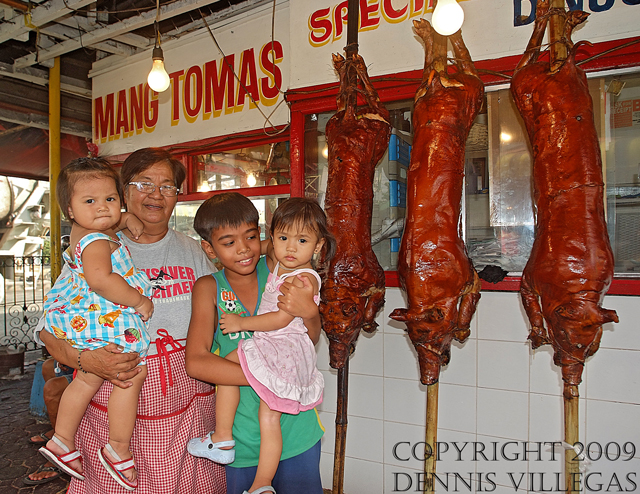
Aling Cora delos Reyes with her grandchildren--heirs to the legacy of the lechon pioneered by the great Tomas delos Reyes**
*The rights to the Sarsa ni Mang Tomas was eventually bought by Justice Alex and Asyang Reyes who owned the Aristocrat chain of restaurants. The Aristocart now produces in mass-quantity the Sarsa and even being exported abroad.
**Special word of thanks to Aling Cora delos Reyes of Mang Tomas Lechon for allowing me to interview and photograph her despite the day's hectic schedule of festivities. Thanks for the very tasty and mouth-watering lechon!
Special thanks also to Monchie Ferreros of Monchie's Lechon for inviting me to the sumptuous lunch during the Lechon Parade.
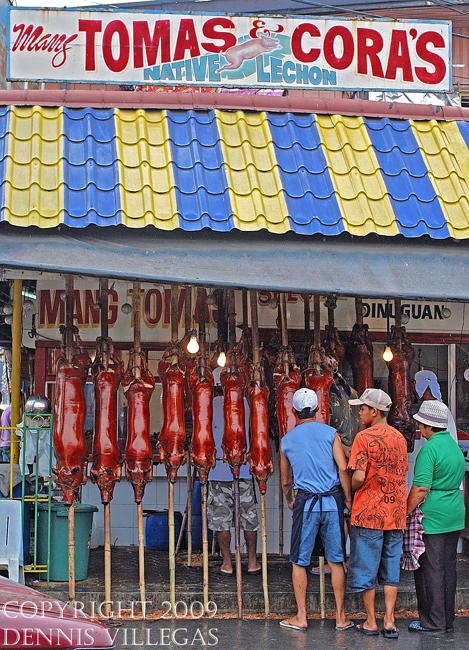
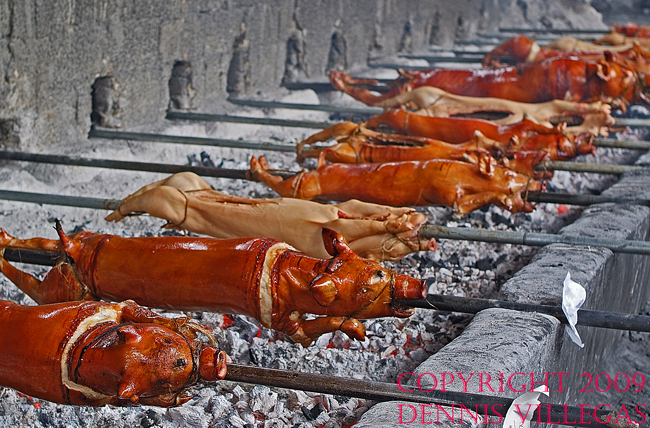
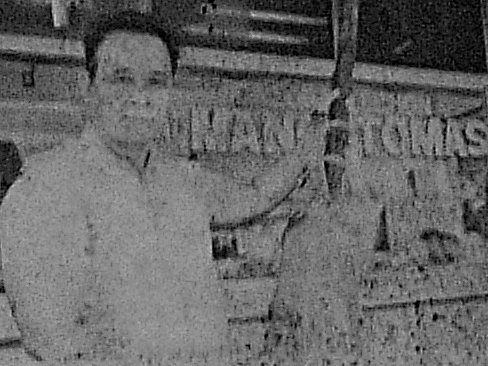
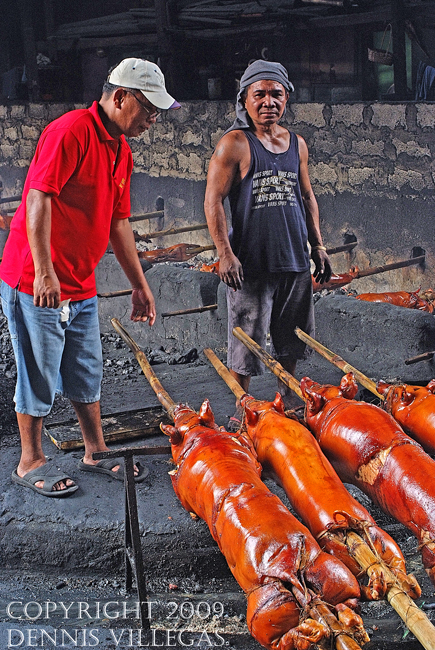

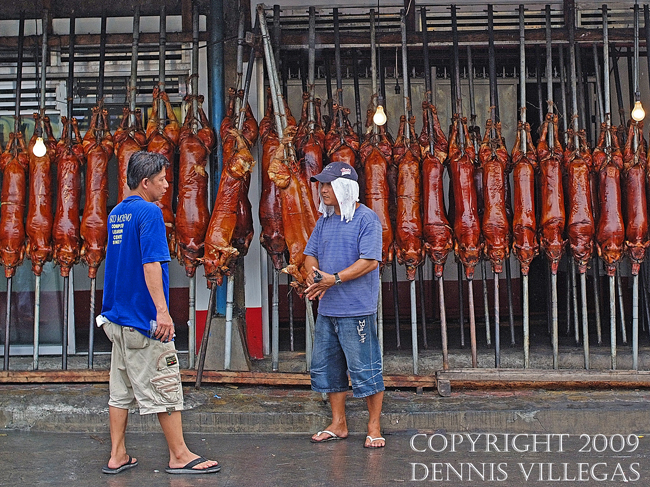
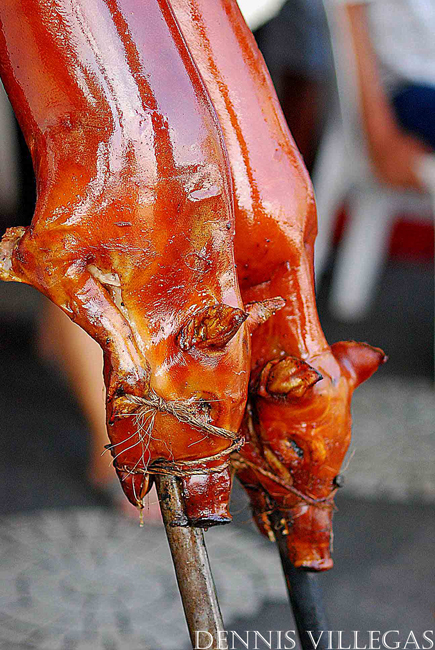
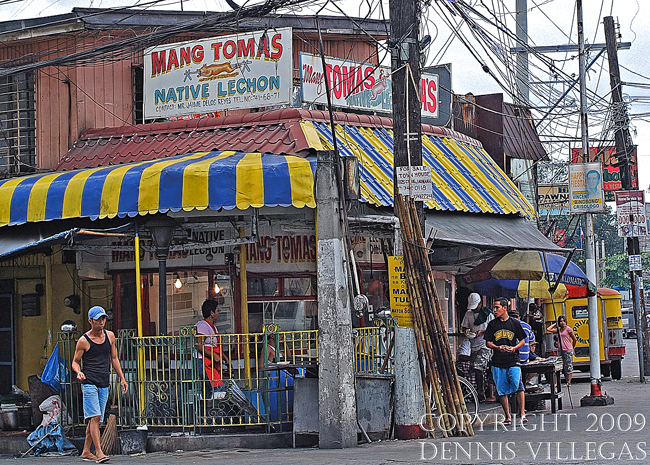
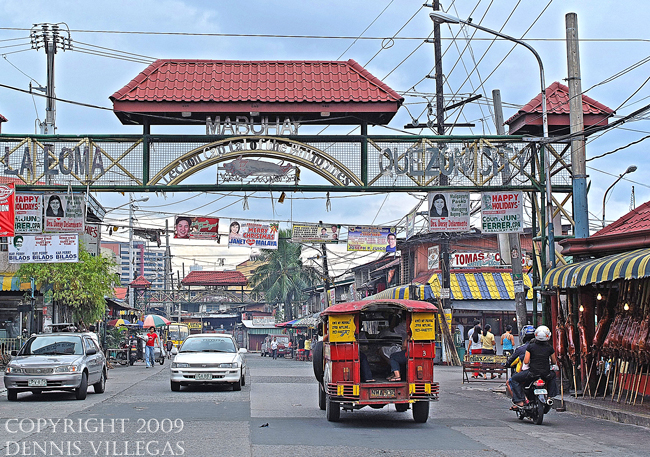
No comments:
Post a Comment